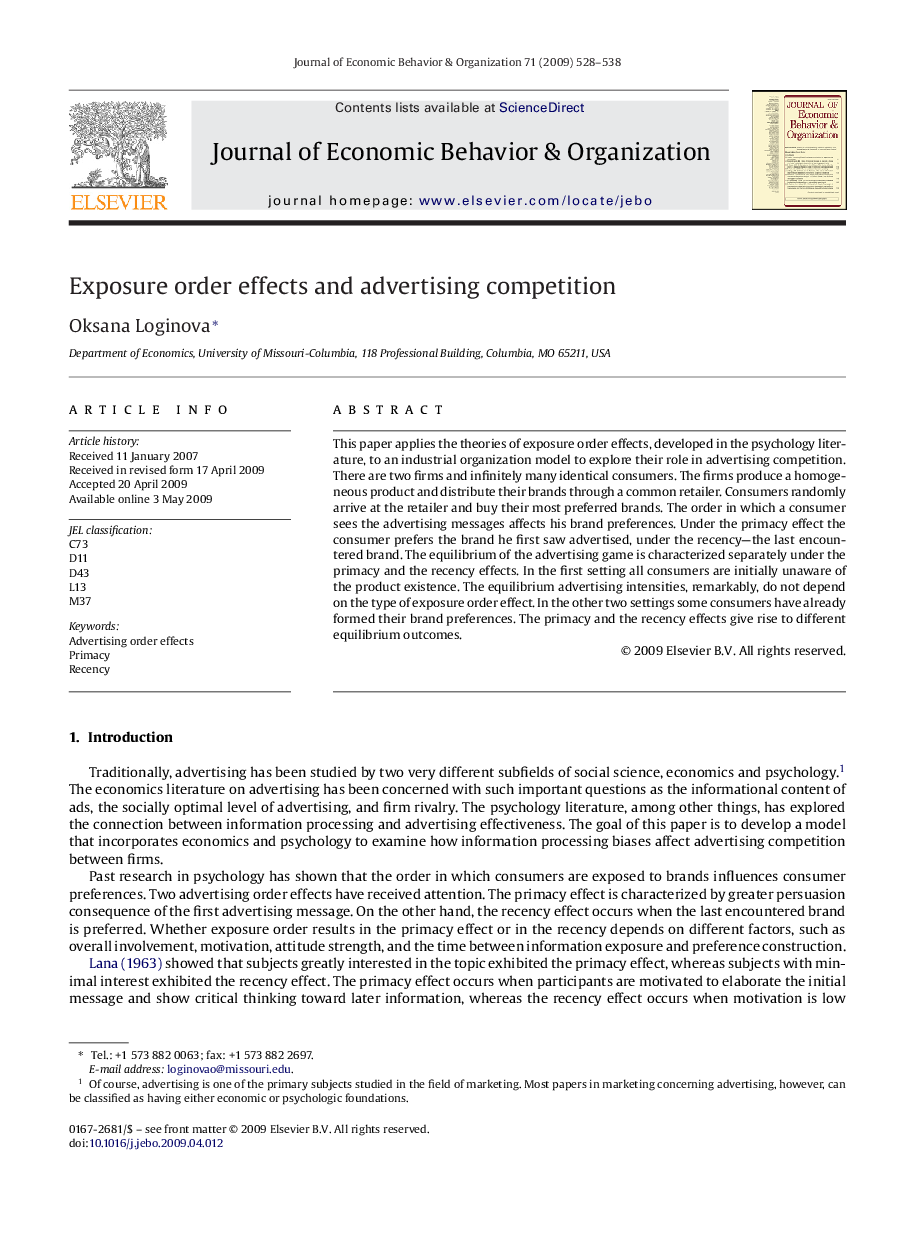| Article ID | Journal | Published Year | Pages | File Type |
|---|---|---|---|---|
| 884280 | Journal of Economic Behavior & Organization | 2009 | 11 Pages |
This paper applies the theories of exposure order effects, developed in the psychology literature, to an industrial organization model to explore their role in advertising competition. There are two firms and infinitely many identical consumers. The firms produce a homogeneous product and distribute their brands through a common retailer. Consumers randomly arrive at the retailer and buy their most preferred brands. The order in which a consumer sees the advertising messages affects his brand preferences. Under the primacy effect the consumer prefers the brand he first saw advertised, under the recency—the last encountered brand. The equilibrium of the advertising game is characterized separately under the primacy and the recency effects. In the first setting all consumers are initially unaware of the product existence. The equilibrium advertising intensities, remarkably, do not depend on the type of exposure order effect. In the other two settings some consumers have already formed their brand preferences. The primacy and the recency effects give rise to different equilibrium outcomes.
